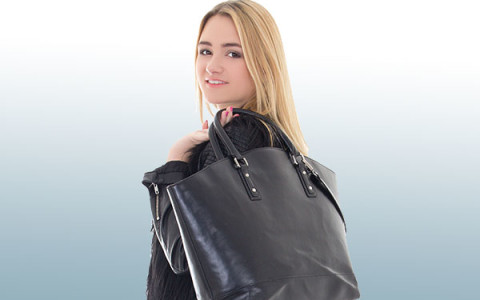
Tips for Selecting the Right Purse
- Buy different sizes of purses for different occasions. The size of your purse should reflect specific activities:
- Short errands—small, compact purse
- Long errands—small backpack or knapsack worn around the waist
- Avoid heavily loading tote-style bags, which are worn over the shoulder.
- Select purses with built-in compartments. This will help to distribute the weight more evenly.
- Choose a handbag that is proportionate to your body size and no larger than what is needed.
- Avoid selecting purses made of heavy material such as leather, which adds extra weight. Instead, select handbags made of lighter materials, such as microfiber and fabric.
- Straps: Avoid thin and long straps; straps should be wide and adjustable. Ensure that pressure caused by the straps does not cause discomfort.
Tips for Packing a Purse
- Consider the contents of your purse—can you leave some items at home or in your car?
- Eliminate unnecessary duplicate contents, such as extra pens and lipsticks.
- Wallet: Regularly empty your wallet of coins. Reduce the number of cards you carry; many places can access your account without the proof of your card.
- Toiletries: Look for travel-size options for items such as lotions, make-up, and hand sanitizers.
- Cell phone: Clip your cell phone to your waist.
- Keys: Leave keys you do not use on a regular basis at home.
- Accessories: Limit the number of accessories in your purse.
- Medication: Request sample-sized medications.
Tips for Selecting the Right Handles
- For purses with short handles, switch positions frequently to avoid fatigue from muscle overuse.
- For Purses with shoulder straps:
- Place the strap diagonally across the opposite shoulder to help distribute weight evenly across the back.
- Square your shoulders and avoid lifting your shoulders to keep the straps from slipping.
- Alternate shoulders by switching the bag from side to side.
- Consider resting your purse on a counter when standing at a checkout.
These tips were provided by Brittney Nichols, OTS ([email protected]); Priscilla Nova, OTS ([email protected]); and Karen Jacobs, EdD, OTR/L, CPE, FAOTA ([email protected]) of Boston University.
